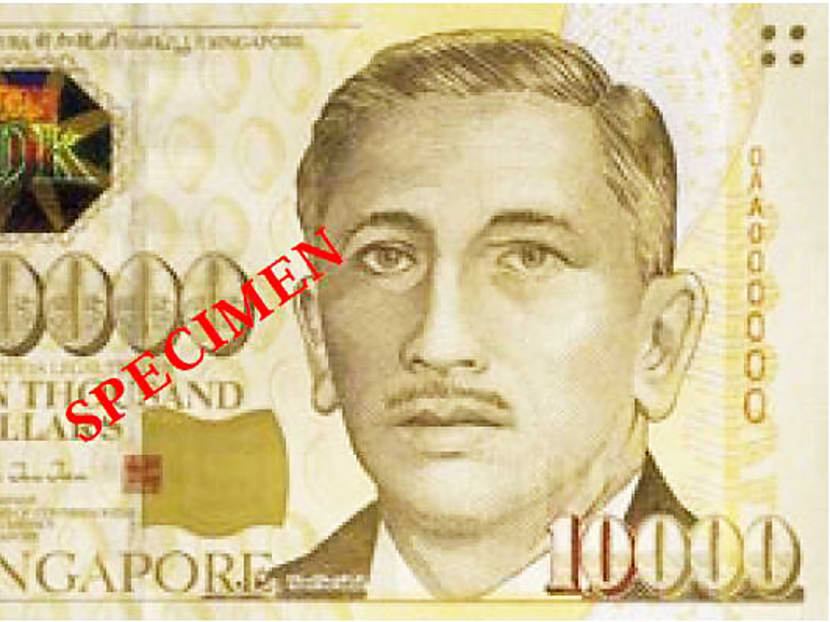S’pore monitors use of high-value notes to combat money laundering
SINGAPORE — The Republic is continuing to monitor the use of high-value local currency bills, even as the amount of S$10,000 notes in circulation declines, as it keeps up the drive against money laundering.

The MAS discontinued the issuance of the S$10,000 note in October 2014 to mitigate the risk of money laundering. Photo: AGC
SINGAPORE — The Republic is continuing to monitor the use of high-value local currency bills, even as the amount of S$10,000 notes in circulation declines, as it keeps up the drive against money laundering.
The Monetary Authority of Singapore (MAS) discontinued the issuance of the S$10,000 note, one of the highest-value denominations in the world, in October 2014 in a pre-emptive move to mitigate the higher money-laundering risks associated with large-value cash transactions. To hasten the withdrawal of the note from general circulation, the MAS also instructed banks to stop recirculating the note from October 2014, said a spokesperson for the central bank earlier this week.
“For the existing S$10,000 notes that are in circulation, the stock of such notes have declined over time, as worn notes are returned to us and not replaced. The S$1,000 note is the next highest denomination after the S$10,000 note. We will continue to monitor the use of high-value notes issued by Singapore,” said the spokesperson.
The shady use of high-value notes hit the headlines after the European Central Bank announced last week the phasing out of the €500 (S$779) bank note by the end of 2018, acknowledging it played a role in money laundering and financing terrorism. The next highest denomination is the €200 note. In the United States, the highest denomination is the US$100 (S$137) note after the Federal Reserve discontinued the US$500, US$1,000, US$5,000 and US$10,000 notes in 1969. In the banking hub of Switzerland, the highest denomination is the 1,000-franc note (S$1,410), which is in limited supply.
High denominations allow individuals to carry large amounts of money in suitcases across borders, facilitating money laundering and illicit activities. Carrying smaller denominations will require several suitcases for the same amount of cash. While the availability has decreased, the S$10,000 note is still in circulation and remains legal tender, said Mr Ali, who operates a money-changing business here.
“It’s only when the banks get it that they get withdrawn from circulation. For money changers, we have to take down the serial number of the note but it remains in circulation,” he said, adding that those who possess the note are usually foreign businessmen.
Phasing out high denominations helps to curb money laundering, but there are still other avenues for those seeking to move funds illicitly, such as through offshore banks and shell companies. Greater compliance regulations for banks after the US sub-prime mortgage crisis between 2007 and 2009 have also made it more difficult to make large cash transfers, said CIMB economist Song Seng Wun. He added that the general trend towards a cashless society has also resulted in less use of physical notes.
While online transactions may feel safer compared to carrying a suitcase of cash, some among the older generation — especially those who have been through periods of crisis when banks stayed shut — may prefer to hold hard cash. “Cash is also being made of more durable material nowadays, so they don’t have to worry about dollar notes being eaten by rats,” added Mr Song.





